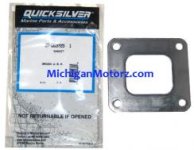so I am zooming along just fine in my 1974 srv200. The ole 302 has a new cam, a four barrel, a 4 inch center rise exhaust system. So I don't think that I am an idiot, (unless you ask my wife), but the only thing I could figure to do with the multiple hoses at the thermostat housing was route the hoses which previously went to the dry joint lower manifolds in a little circle back into the housing, where the water gos to the new wet joint manifold system.
Since all water in must go out somewhere, I am at a bit of a loss as to why and wether I really need a thermostat at all. We run here in Michigan mainly above 70 degrees water and below 90 degrees air temperature. water a bit cooler up north, but you get my drift.
I am thinking that I should put on a closed system thermostat housing cap, and just ditch the thermostat itself. Anyone been down this road before? the octopus eating two of its own legs is looking pretty stupid when you remove the engine cover... but then you want to force engine block circulation before you cool the manifolds and exhaust the water....
Since all water in must go out somewhere, I am at a bit of a loss as to why and wether I really need a thermostat at all. We run here in Michigan mainly above 70 degrees water and below 90 degrees air temperature. water a bit cooler up north, but you get my drift.
I am thinking that I should put on a closed system thermostat housing cap, and just ditch the thermostat itself. Anyone been down this road before? the octopus eating two of its own legs is looking pretty stupid when you remove the engine cover... but then you want to force engine block circulation before you cool the manifolds and exhaust the water....


